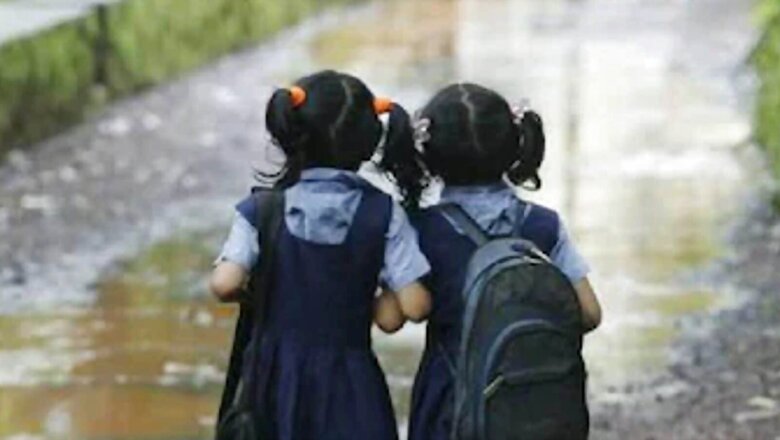
views
Gender equality is imperative to ascertain inclusive socio-economic development and needs a change in the societal mindset. The sex ratio of a country is the primary indicator of equality and is a direct indicator of the status and welfare of women. A change in the sex composition of a society often have a direct bearing on its social, cultural and economic fabric.
As per the 2011 census, the sex ratio in India stood at 940 females per 1000 males and the child sex ratio stood at 914. This skewed sex ratio revealed that our Indian society faces a problem of an unfavourable sex ratio, indicating that prejudices exist against females.
However, the findings of the National Family Health Survey (NHFS-5) for 2019-21 brought a glimmer of hope and positivity by indicating a healthy trend in the overall sex ratio. As per the NHFS-5 data, there are 1020 females for every 1000 males. Decades of efforts have yielded positive outcomes. Multiple programmes by the government, such as Beti Padhao, Beti Bachao; Udaan; Balika Samriddhi Yojana, etc., seemed to have succeeded in bearing the results we all, as a collective society, have been hoping for decades.
But before we go into a celebratory mode, there is a need to err on the side of caution.
IS IT STILL TOO EARLY TO CELEBRATE?
As a country, we may have improved our sex ratio, but our child ratio at birth remains a severe cause for concern. Sample this: India’s Child Ratio at Birth (CRB) is at 929 as per NHFS-5, which, despite a slight improvement in the past five years, is still way below the WHO’s natural ratio at birth, which stands at 952. Moreover, the figures revealed by NHFS are based on surveying a mere 636,699 households during the NHFS-5.
Given the vast length and breadth of the world’s largest democracy, this data may not accurately represent the Indian populace. At the maximum, the sample size for the survey can serve as a proxy for the population census. Therefore, the upcoming (latest) census will accurately represent the overall sex ratio and the Child Sex Ratio in our country.
Another critical aspect that we must bear in mind before taking the figures of the NHFS-5 at face value is that the second phase of the survey was conducted during the COVID-19 pandemic with multiple, periodic lockdowns in place, thus affecting the trends of migration and reverse migration, and overall results of the survey.
THE WAY FORWARD
There is no doubt that the Government of India is taking various steps to ensure equality of girl child, focussing on providing rights, creating awareness, and aiming for women’s empowerment. For instance, in 2021-22, the mission for women’s protection and empowerment was renamed ‘Mission Shakti’.
Mission Shakti carries two components, SAMBAL and SAMARTHYA, which were allocated Rs 587 crore and Rs 2,522 crore, respectively, in 2021-2022. Beti Bachao Beti Padhao scheme is another one among the various components under SAMBAL. All the other components under SAMBAL are ‘One Stop Centre’, ‘Nari Adalat’, ‘Mahila Police Volunteer’, and the Women’s Helpline.
While the government is going all out in making efforts to ensure safety, security, and empowerment of a girl child, what needs to be done further is to focus on a more granular, micro level, starting with those districts across states which have alarming sex ratios to ensure intensive steps are taken accordingly.
Another crucial step in this direction will be to focus on and prioritize cities with lower child sex ratios for holistic action. Discussing and deliberating upon issues such as the declining child sex ratios, making them a part of the public discourse, conferences, workshops, seminars, etc., to create awareness can go a long way in helping the cause. States need to plan and implement innovative and intriguing techniques to flourish central schemes such as Beti Bachao Beti Padhao, customising them to suit local needs and sensibilities.
Another way to improve the child ratio at birth on a micro level is to encourage communities to take up the matters in their hands, and work towards improving the birth rate, and overall growth of the girl child. While small and large-scale communication campaigns to promote the overall development and education of the girl child have been taking place, states need a mission mode to implement these effectively at the grassroots.
Overall, our society needs to be mobilised to challenge gender stereotypes and evils against the girl child. Additionally, local governing bodies and groups can also be trained to work in a way that they become catalysts for social change and improvement. With concerted efforts beginning now, we will be able to see the day when we wouldn’t need to celebrate a special day for ‘Girl Child’ as every single day, our girls will flourish and shine!
Dr Aarushi Jain is Policy Director of the Bharti Institute of Public Policy, Indian School of Business. Views expressed are personal.
Read all the Latest Opinions here















Comments
0 comment